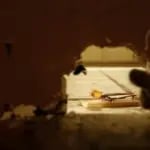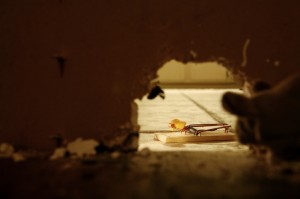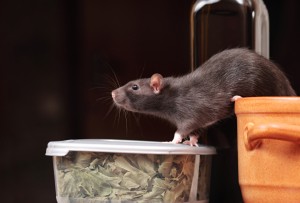Rodent Infestation: Signs of Rodents & How To Get Rid of Them

 It doesn’t take much to make a rat or mouse happy—an available food source, protection from the elements and a sheltered spot to raise a family are really all a rodent needs to survive. Unfortunately these things are easily found in most houses and apartments.
It doesn’t take much to make a rat or mouse happy—an available food source, protection from the elements and a sheltered spot to raise a family are really all a rodent needs to survive. Unfortunately these things are easily found in most houses and apartments.
Rodents can carry a variety of diseases including, typhus, toxoplasmosis, trichinosis and Hanta virus. They also act as hosts for fleas, mites, ringworms and tapeworms. An infestation of rodents can also result in an infestation of these parasites. Although their gnawing can cause a great deal of property damage, typically the worst damage is the result of a contamination from feces and urine.
A rodent population can become well established before a rat or mouse is ever actually spotted in your home. Most often a homeowner will notice droppings or urine, or a strong musky odor. Gnawing, squeaking and running sounds may be noticeable at night, when rodents are most active. Smudge marks, made up of body oils and dirt are common along walls, rafters and entrances. Occasionally abandoned nests, composed of shredded paper, cardboard and fabric will be discovered. Often pets will become excited, nervous or agitated when they detect the sound of rodents moving in the ceiling or wall spaces.
Rodent control is handled by utilizing a three-pronged strategy consisting of exclusion, sanitation and population control. Exclusion, also known as rodent proofing, can be challenging, especially in the case of mice, which can pass through an opening as small as one-quarter inch. It’s vital that all openings into a building are securely sealed with materials that the rodents cannot gnaw through to regain entry. Special attention must be given to foundations, crawl spaces, and attics. Pest control professionals are specially trained to find and seal even the most challenging entry points.
Sanitation refers to reducing areas that attract or provide cover to rodents. Trash should be kept in covered bins, fallen fruit should be picked up from beneath trees and compost should be either in a sealed bin or beneath a snug screen. Rodents take advantage of shrubs and vines, using them as both shelter and pathways. Vines, shrubs and trees should be thinned and trimmed away from the building, if not done away with completely. A pest control professional can advise you on whether your landscaping is providing shelter and access points for rats and mice.
Although some pets like dogs and cats will sometimes find and kill mice and rats, a household pet is not usually enough to end a rodent infestation. Even an effective hunter is unable to get to rodents when they are in crawl spaces, walls and ceiling spaces. Electronic devices that emit ultrasonic sounds may be initially successful in rodent control, but once the rodents become accustomed to the sound it may no longer be effective option to control the infestation.

Population control is most often accomplished through trapping or baiting. There are many types of traps available, such as glue traps, snap traps and live capture traps but proper placement is vital for effective rodent control. A professional exterminator can assess the situation and place the appropriate traps in locations where they will be most effective. In some situations, baits provide the most effective solution for a rodent infestation. Because of the risk of toxic exposure, especially to pets and children, a professional exterminator, trained in their usage, is the best line of defense.
Serving all of the Philadelphia metro and surrounding areas, Green Pest Solutions is a professional pest control company and utilizes our Green Band Protection System to keep your home free of rodents and all other pest that could invade your home. Call us for all your rodent and pest control issues and receive your free in-home evaluation today.